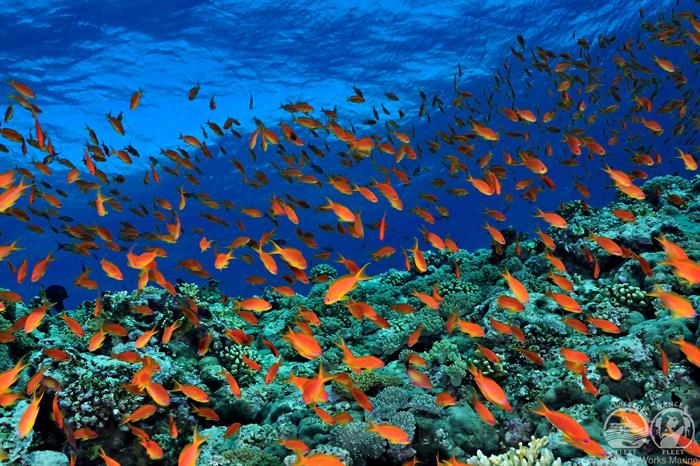North Germany
Kreidesee
Kreidesee is close to Warstade to the west of Hamburg. The lake was once an open cast chalk quarry that operated between 1862 and 1976. Once excavation and production ceased the hole that remained filled with water. Part of the factory remains, and divers can swim along the old mine road. There are flooded buildings, a Piper PA-28 airplane, and a few other artificial structures plus freshwater fish like trout and salmon. Divers can reach depths of 60m / 200 ft and enjoy 30m/100ft visibility.
Baltic Sea
The Baltic Sea is tough diving but rewarding, and packed with history. Many artifacts have been discovered, and there are many wrecks to explore. The Helland and Hanau are the most popular due to their location and depth. The Helland is a large steel motor yacht which lies at 18m/60 ft. The Hanau is a 137m / 450 ft long steam powered cargo ship. It struck a mine in 1944 and today lies in 15m / 45 ft of water.
East Germany
Sundhauser See
The bowl that is now the Sundhauser See was produced by gravel mining and lies a little south of the city Nordhausen in the center of Germany. An innovative artificial site sets this ex-mining pit apart. Called Nordhuisia, the site’s components are modeled on Nordhausen and submerged beneath the Sundhauser See. Pike, perch, sturgeon, and eels are the city’s live residents, but divers will see human statutes in their houses. There’s also a graveyard, a church, and a set of gallows to explore. Materials are environmentally friendly and chosen to attract life. Many oak sculptures litter the town crafted by chainsaw artists Dieter and Sebastian Kruger.
Kulkwitzer See
At Kulkwitzer See, you can dive, water ski, hike, cycle, and sail, making it a great outdoor lovers destination. The lake itself is 32m / 105ft deep with a variety of sites on offer most of which are easily accessible from the shore. Visibility ranges from 10-20m / 35-70 ft, and divers often see perch and pike. Dive at night, and you’ll see eels and crabs too.
Mecklenburg Lake District
This area is a network of lakes and divers love Lake Plau, Feldberg District, and Lake Tollense because they feature great visibility and abundant fish life.
South Germany
Bodensee / Lake Constance
At 63km long Bodensee or Lake Constance is one of the largest freshwater lakes in Europe. The lake lies at 395 m / 1296 ft above sea level and nestles along the German, Swiss, and Austrian borders. As you might expect from such a location, the scenery is beyond imagination. Underwater, the lake is home to 45 species including eels, catfish, turbot, and trout.
The Rhine feeds the lake, and unlike the more recent history of Germany’s flooded quarries, Lake Constance was formed over 10 thousand years ago. The cold water’s run to a depth of 250m/ 820ft and offer a variety of dive opportunities, many of which are accessible from the shore. Slopes, drop-offs and interesting rock formations like the Devil’s Table are some of the features divers can see.
The 46m / 150 ft long paddle steamer Jura is a big draw for divers. The Jura sank after a collision in fog in 1864 and slipped out of memory. It took two re-discoveries before this wreck earnt its place in divers’ ‘must see’ lists. She sits upright in 39 m /128 ft of water.
Walchensee
Walchensee is a large alpine lake 800m / 2625 ft above sea level in the Bavarian Alps which means the surrounding vistas are stunning. The lake is 180m / 600 ft deep and renowned for its spectacular turquoise color. Even though the color comes from calcium deposits, you can still expect visibility of 10-15m / 32-50 ft. Carp, eel, trout, turbot, and pike are plentiful, and there are a few interesting wrecks too; an armored car, a VW Beetle, a Lancaster Bomber, a Messerschmitt and an Aero Commander 680.
Ilsesee
The IIlsesee is known for the diversity of life that makes their home. Grass carp, sturgeon, pike, eel, tench, roach, carp all inhabit what was once a gravel pit. The lake reaches 15m / 50 ft in depth and is ground fed.
West Germany
Ederstausee
With a surface area of 11.8 km sq. (7.3sq mile), Ederstausee is one of Germany’s largest drinking water reservoirs. The dam itself is 48m / 121 ft high. The lake is 37m / 121 ft deep, and divers will find village ruins. Dive zones are marked and exclude sailing, surfing, and fishing activities.
Biggesee and Mohnesee
Both Biggesee and Mohnesee are reservoirs, Mohnesee being the largest.
Naturally, the depth can vary, but Biggesee can reach 42m/ 138 ft. Visibility varies due to stagnation but is best from mid-May.
Apart from water activities, cycling and hiking are popular at Mohnesee too. Night diving here is great, but you do need to register with the local dive center if you want to do this.
Blausteinsee
Blauteinsee is a disused lignite mine that reaches a depth of 46m / 151 ft. There are two forests and some wrecks which are accessible from the shore. Night dives here are great.
See im Berg
The Lake in the Mountain is a 45m / 148 ft deep quarry at 480m / 1575 ft altitude. Cars have been used to create habitats and divers see trout, perch, and carp. Visibility here can be as low as 10 /30 ft.








